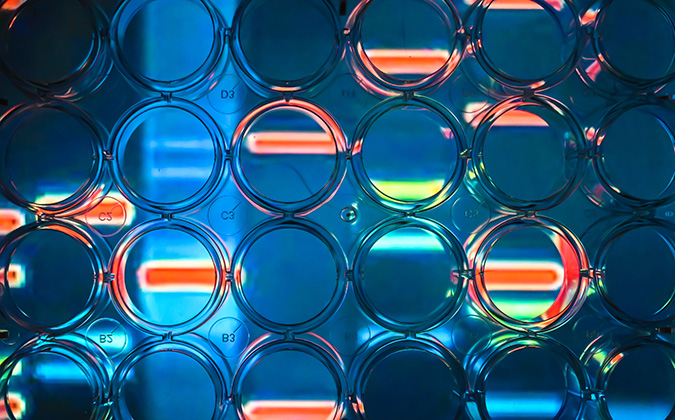
Combining technology and knowledge to improve aquaculture in Southeast Asia
Southeast Asia is one of the world’s fastest-growing regions for aquaculture, but production efficiency, environmental impact and disease remain bottlenecks for sustainable production.
That’s where the work of food consultancy company Fresh Studio aims to make a difference. While its global focus is across crops and livestock, working with both private and public partners, the region is proving a hub for a number of projects to improve fish health and productivity.
Within the aquaculture sector, a significant part of the high mortalities in the region tend to be a result of secondary infections from opportunist pathogens, says Joe Pearce, aquaculture project manager for the consultancy company, with the main issues coming as a result of poor water quality.
“It’s still something that’s quite far behind. Almost no small-scale farmers filter their intake water, and certainly nobody filters or treats their discharge water. If you can improve on those two points, you’re likely to have better water quality and fish health,” he said.
Demonstration farm highlights improved survival
Pearce’s team has set up a small pangasius R&D farm in Can Tho, which is in the Mekong Delta, Vietnam — one of the most concentrated areas of aquaculture in the world.
The project has been established to test modern technology such as the NanoRAS from the Danish company Alpha Aqua, which features drum filtration, a biological filter and UV sterilization. There is a specific focus on the first 14 days of the lifecycle of the fish.
“What farmers tend to do is they fertilize the eggs, and immediately after hatching they stock them into ponds. There’s no control, no managed feeding,” he continued.
“What we’re doing is stocking them into tanks in basically a brand new research system, feeding them with a controlled diet, monitoring all the different parameters and just trying to control everything as best as possible.”
It’s fair to say there is considerable room for improvement.
“Traditionally, the survival rate in the first 14 days is really low. We’re trying to figure out what the problem is and how to improve that. We’ve made some good progress already and are getting survival of about 48%. But there’s still a long way to go.”
Helping a developing market
Fresh Studio is currently managing the Powering Aquaculture Progress project on behalf of its client, animal-feed company De Heus Animal Nutrition, and working with local partners.
The 5-year project aims to modernize and develop the aquaculture supply chain in Myanmar by creating access to modern inputs and technologies — mainly seed and feed, as well as upgraded hatchery systems.
The work is looking at farming of the local species rohu, a type of carp. Production of rohu also suffers from the issues of low juvenile survivability seen with Vietnamese pangasius, Pearce said, and the sector in general is a far cry from the image of modern aquaculture, with stocking densities generally low and health interventions minimal.
The team’s work aims to provide access to modern inputs and technologies and increase the technical knowledge of farmers by providing training to 25 extension staff, who go on to train 600 farmers.
Modern facilities put technologies to test
A further aspect of the project involved two hatcheries in the country being upgraded with modern water-treatment technologies including mechanical filtration, sterilization and disinfection, to improve water quality and promote good fish health.
Meanwhile, the construction of the Aquaculture Application Center (AAC), which consists of 12 identical ponds used for scientific trials as well as two larger demonstration ponds, was recently completed to apply knowledge and technology from around the world. A pilot project is currently underway at the AAC, testing different feed types to determine their efficacy.
In the long term, the project will lead to the formation of an independent producer organization, Pearce explained, developing a quality standard and a continuous improvement program for its members.
Long-term impact requires education
While international partnerships are useful, the involvement of local companies and institutions throughout is essential for success beyond the span of demonstration projects, he noted.
Getting farmers to change their mindset is a challenge, but this makes the education aspect of the work even more important, Pearce suggested.
“We do lots of training programs, field days, things like that. We bring the farmers to our sites, and we do demonstrations to show them how the technology works so they can actually utilize it themselves after the project finishes,” he said.
Demonstration of the effectiveness of vaccines is also crucial, he continued, while the introduction of automated vaccination machines would be a “game changer” for fish health and welfare in the region, especially alongside an intervention like intake and effluent treatment.
Addressing financial barriers
The continued demonstration of technologies which improve environmental conditions builds on an earlier project called Mekong Aquaculture Solutions. This aimed to support the development and adoption of sustainable technology solutions, specifically by testing a low-cost floating recirculating aquaculture systems (RAS) that can be deployed into ponds to improve water quality.
“We had really good results, including increasing biomass by four times without affecting water quality and reducing water usage by nearly 5.5 times. This floating RAS is a technology we really want to roll out to a wider audience, so we are looking into avenues to do this,” Pearce said.
Finance remains a major barrier for uptake of new technologies in the region, he conceded, though opportunities remain.
“If you look at something like shrimp farming, there’s a lot of money to be made there. Farmers are starting to realize that if you invest in sustainable technology and solutions, then the return is quite quick,” he added.
“One of the other things we’re trying to do is look into opportunities for financing for farmers, in order to enabling them to invest in new technologies. This is really key for the sustainable growth of the sector – which is what our vision for the region is all about.”






